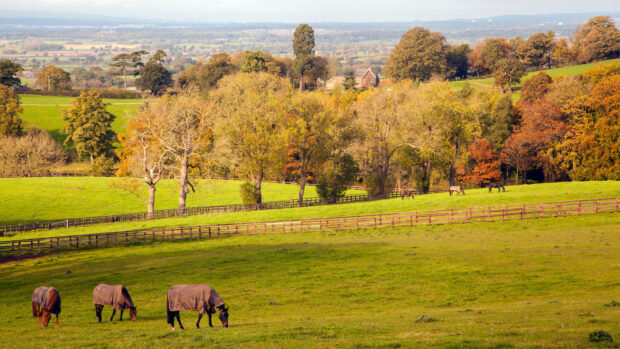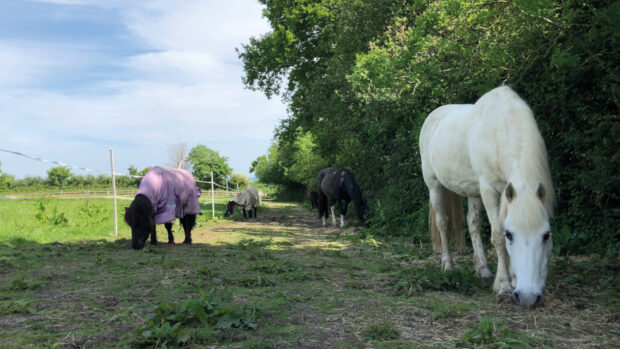Q. I have bought a 14hh New Forest pony, which weighs around 455kg. He doesn’t look overweight at the moment, but I’m a little bit concerned that he will become fat after a few more weeks of spring grass, even though he will be working hard during the rest of the season. If I restrict his grass intake, will he be getting adequate fibre in his diet?
Nutritionist Christine Smy replies: Most pony owners dread the emergence of spring grass, not only because of the problem of the pony laying down fat, but also because of the high incidence of laminitis among native breeds.
It is advisable to restrict your pony’s intake of grass during the spring and summer months. There are several methods which can be used to restrict grazing:
- Create a starvation patch by fencing off a small section of the field.
- Strip graze the field withthe aid of electric fencing, slowly extending the grazing area once all the grass has been eaten down.
- Borrow some sheep from a farmer – these animals are great mowers.
- Stable your pony for 24 hours. This option is only advisable as a last resort as he may start to become depressed due to both isolation and boredom.
- Use a bucket muzzle. Don’t leave a muzzle on for longer than eight hours and stable the pony with hay for the rest of the time to prevent him pigging out when his muzzle has been removed.
If you opt for one of the first three options listed above, bear in mind that even though the grass appears to be kept permanently short, it will still be growing and the nutritional quality will be very good.
Make the most of fibre
There are plenty of ways to feed other forms of fibre if you decide to restrict your pony’s grazing,
Horses can obtain up to 70 per cent of their energy from the digestion and breakdown of fibre. Unlike feeding high starch diets, fibre helps to reduce acid conditions in the gut which can cause problems such as colic, tying up and laminitis.
Provide hay or haylage as the main portion of the forage, making sure it’s good quality by checkingit doesn’t contain dust, mould or poisonous plants.
When looking for concentrate feeds, again choose one which is high in fibre. If your pony tends to be quite fizzy, feed him a high fibre, low energy product, such as high fibre cubes. If he’srather lazy, opt for a medium energy product which contains high digestible fibre.
Chaff will also add fibre to the diet. Look for chaffs which are low in molasses, in particular those containing dried grass or alfalfa.
If your pony is prone to laminitis, choose a concentrate and chaff containing the Laminitis Trust seal of approval. These products are low in calories, low in starch and ideal to feed to native ponies.
Read more on feeding an overweight horse or pony:



